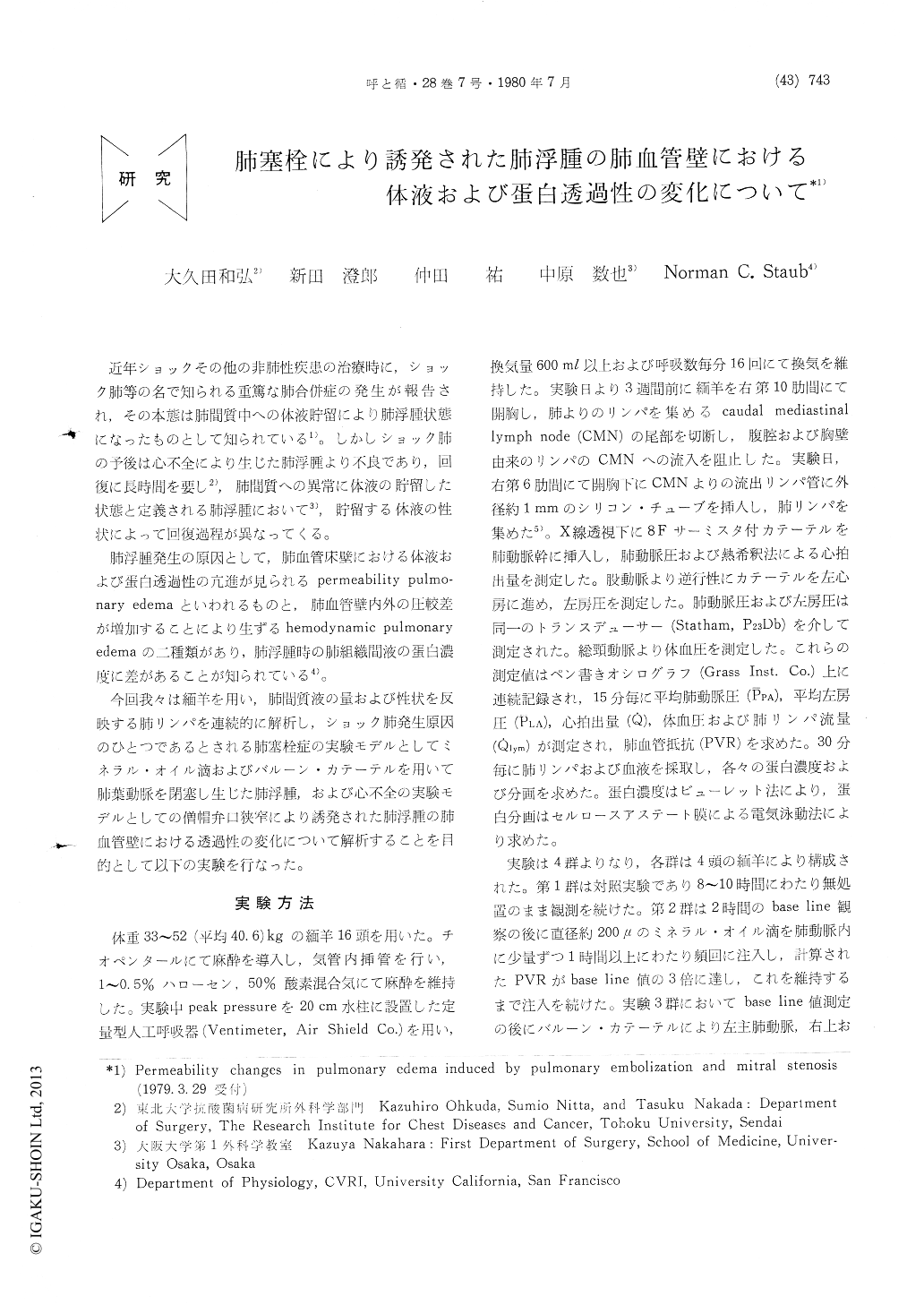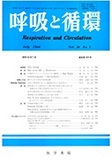Japanese
English
- 有料閲覧
- Abstract 文献概要
- 1ページ目 Look Inside
近年ショックその他の非肺性疾患の治療時に,ショック肺等の名で知られる重篤な肺合併症の発生が報告され,その本態は肺間質中への体液貯留により肺浮腫状態になったものとして知られている1)。しかしショック肺の予後は心不全により生じた肺浮腫より不良であり,回復に長時間を要し2),肺間質への異常に体液の貯留した状態と定義される肺浮腫において3),貯留する体液の性状によって回復過程が異なってくる。
肺浮腫発生の原因として,肺血管床壁における体液および蛋白透過性の亢進が見られるpermeability pulmonary edemaといわれるものと,肺血管壁内外の圧較差が増加することにより生ずるhemodynamic pulmonary edemaの二種類があり,肺浮腫時の肺組織間液の蛋白濃度に差があることが知られている4)。
We studied steady state transvascular exchange of fluid and protein after pulmonary arterial embolism. In anesthetized sheep, ventilated with positive pressure, we measured pulmonary arterial and left atrial pressures, cardiac output, lung lymph flow, protein concentration of lymph andplasma, lymph/plasma protein concentration ratio. We calculated pulmonary vascular resistance and permeability coefficient in pulmonary vascular wall. In 8 sheep, we obstructed the pulmonary arteries with mineral oil droplet emboli (mean diameter of 200 μ) or lobar arteries with balloons untill pulmonary vascular resistance reached to 2-3 times baseline. In every experiment, lung lymph flow increased as pulmonary arterial pressure increased. The lymph/plasma protein ratio did not change and fluid permeability coefficient increased 1.5-2 times base line value. In four sheep, we increased left atrial pressure by balloonobstruction of mitral orifice. Pulmonary arterial pressure increased as much as in the embolization experiments and lymph flow increased but lymph/plasma protein ratio decreased and fluid permeability coefficient did not change. We concluded that the increased fluid and protein flux after embolization cannot be due to high pulmonary arterial or pulmonary venous outlet pressures alone and pulmonary arterial obstruction induced fluid and protein permeability enhancement.

Copyright © 1980, Igaku-Shoin Ltd. All rights reserved.


